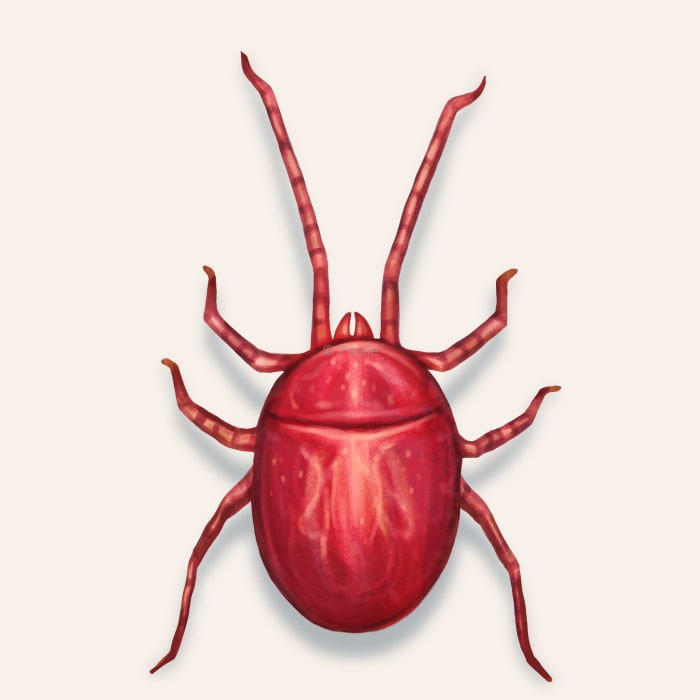How to identify and get rid of clover mites

An unlucky find: how to keep clover mites out of your home this spring
If you’ve noticed a horde of red dots moving along your wall, then you are the lucky (or perhaps unfortunate) recipient of a clover mite infestation.
While they may look like a menacing force of blood-red mites, these little guys (or mostly gals) are not looking for a snack or their next victim.
Clover mites are arachnids, related to ticks and spiders. Their diet consists of over 200 plants including most lawn grasses, clover, dandelions, and strawberries. They prefer cooler weather in the early spring.
They have become more of a home pest as lawns are now more heavily fertilized than before and these mites flourish in lawn grasses. Clover mites will migrate through small cracks and gaps in your walls and can number in the hundreds and sometimes thousands!
How to identify clover mites
Clover mites are very small arachnids that look like tiny red dots to the naked eye. With a magnifying glass, you may be able to see their round, oval bodies with their distinct long front legs protruding out like antennae.
While the adults are a dark red and turn slightly green after they’ve fed on plant juices, the younger mites are a brighter red.
How big are clover mites?
These mites are smaller than a pin head, between 0.030-0.033 inches. Sometimes they can be confused with a spider mite, broad mite or chigger, which are also very small in size.
Where do clover mites live?
Clover mites prefer lush lawns that haven’t been fertilized correctly, but they also feed on other plants besides clovers and grass. They lay their eggs in the early spring, and while they may only survive for a few weeks, they can produce 5 to 6 generations of offspring in just a few months!
They will cluster in thick vegetation near residential buildings and can make their way inside homes when their numbers are big enough.
Clover mites aren’t very active during the hot summer months and are completely inactive during the cold winter months. They are mostly likely to invade your home during late spring and early summer.
How to get rid of clover mites
Follow some of these tips below to keep your space free of clover mites:
- Keep your lawn trim near the sides of your home
- Remove thick vegetation or attractive plants
- Seal cracks and gaps in your home
- Some experts recommend creating a vegetation-free border around the home, about 18-24” wide.
- Mulch or pea gravel barriers that make it difficult for clover mites to cross
- Plant ornamental flowers and plants that clover mites aren’t attracted to, including zinnias, marigolds, chrysanthemums, petunias, marigolds, and roses
Just don’t squish them as they can stain fabrics and your walls red!
You can also choose a subscription like Pestie to get pro-grade pest control solutions delivered to your door. It’s a customized solution that is tailored to your location, for the ultimate DIY home protection.
Treat clover mites with Pestie
If you're still having trouble keeping clover mites away, the best option is to use a pro-grade, effective pest control solution like Pestie.
Pestie is a do-it-yourself pest control solution that's specially designed to keep clover mites and other pests away from your home.
With Pestie, you can rest easy knowing that your living space is protected and free of creepy crawlies. And the best part? It's designed for people, pets, and the planet, so you can say goodbye to harsh chemicals and hello to peace of mind!
- Save hundreds compared to traditional annual pest plans
- People, pet, and planet-friendly
- Pro-grade customized formulas
Quick facts
- Scientific name
Bryobia Praetiosa
- Colors
Brownish-red to reddish-green
- Life span
1-3 weeks
- Diet
Plant juices from turf grasses and flowers
How dangerous are Clover Mites?
Low danger risk
Clover mites are not harmful to humans, pets, furniture, or homes. The biggest concern is the red stains they leave behind when they get squished.
Clover mites are parthenogenetic, which means that they can create clones of themselves without a mate!








